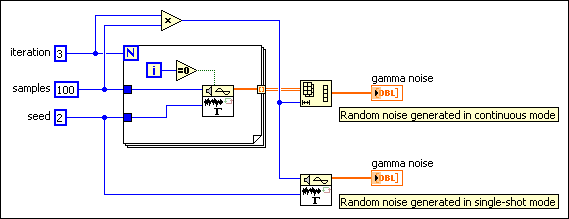Gamma Noise VI
Owning Palette: Signal Generation VIs
Requires: Full Development System
Generates a pseudorandom pattern of values that are the waiting times to the order number event of a unit mean Poisson process.

 Add to the block diagram Add to the block diagram |
 Find on the palette Find on the palette |






 , of the pseudorandom sequence:
, of the pseudorandom sequence:
